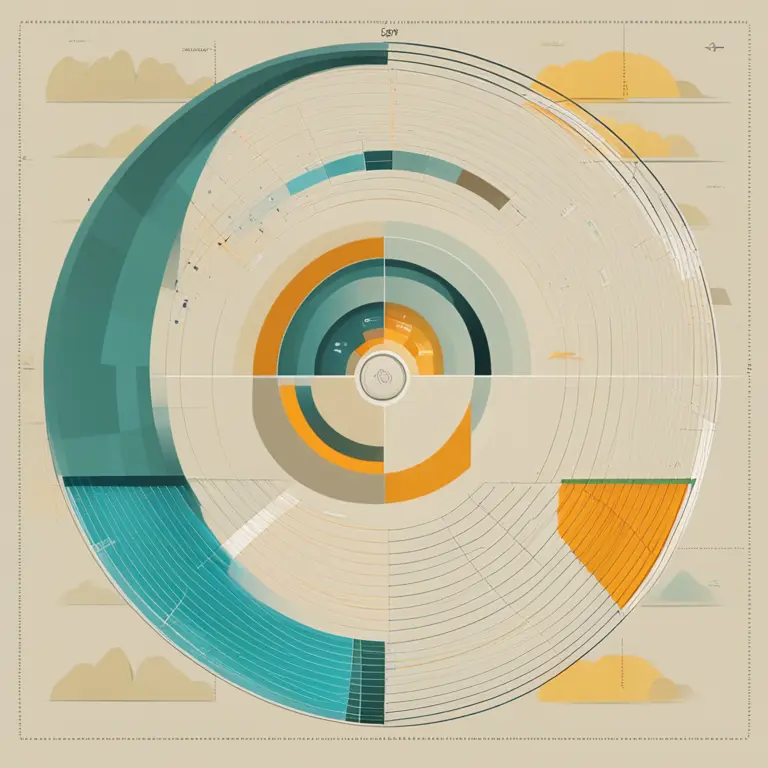
Biorhythms Compatibility: Syncing Our Rhythms
Discover the intriguing connection between biorhythms and relationship compatibility, and learn how syncing your life’s natural patterns can influence personal connections.
article by Adrian Wallace
Introduction to Biorhythms
In the dynamic tapestry of human connections, biorhythms play a pivotal role. Originally conceptualized in the early 20th century, biorhythms are believed to be innate cycles affecting our physical, emotional, and intellectual capabilities. As science evolves, so does our understanding of these rhythmic patterns. In the context of 2024, biorhythms have garnered interest for their potential to improve interpersonal relationships. This article examines the significance of aligning biorhythms with those of others to enhance compatibility.

The Three Primary Cycles
Biorhythms consist of three fundamental cycles: the 23-day physical cycle, the 28-day emotional cycle, and the 33-day intellectual cycle. Each cycle is considered to oscillate between high and low phases, influencing various aspects of our lives. Advancements in data analytics and wearable technology have allowed individuals to monitor these cycles with greater precision, providing valuable insights into optimal timing for collaborative activities, relationship-building, and conflict resolution.

The Science of Synchronicity
The concept of biorhythm compatibility hinges on the synchronization of cycles between individuals. It's suggested that when two people's cycles are in harmony, they're more likely to experience a sense of ease and connection. Conversely, periods of disharmony can lead to tensions. Although skeptics challenge the scientific basis of biorhythms, modern proponents argue that awareness of these patterns can lead to more mindful interactions.

Measuring Compatibility
Various online platforms and applications have emerged, offering to calculate the compatibility of biorhythms. By inputting birthdates, couples can receive analyses of their collective biorhythmic patterns. These tools are often used alongside astrology and numerology as part of a holistic approach to understanding relational dynamics. Users are cautioned to utilize these assessments as guiding tools rather than deterministic predictors of relationship outcomes.

Practical Applications in Everyday Life
As society grows increasingly interested in well-being and self-optimization, biorhythms may find practical applications in scheduling life events, from weddings to business launches. Some suggest planning events when partners' or teams' physical and intellectual cycles align to maximize the chances of success. Emotional cycle synchronization might be considered for resolving conflicts or enhancing communication.
Challenges and Considerations
Critics note that scientific evidence supporting biorhythms is limited. Despite intriguing anecdotal accounts of successful biorhythmic syncing, it remains a controversial topic in scientific circles. The complexities of human behavior and the multifaceted nature of relationships suggest that numerous factors beyond biorhythms influence compatibility. As such, these cycles should be considered in conjunction with broader psychological and situational contexts.
Looking Ahead
The fascination with biorhythms and compatibility is likely to persist as part of a broader exploration of human relationship dynamics. Further research and technology may refine our understanding and application of biorhythms, offering new perspectives on how we connect and interact. The quest for harmonious relationships continues to drive interest in these cycles, with the potential for novel insights emerging as we gain deeper understanding.
Published: 1/25/2024
Modified: 1/25/2024
More predictions
Come back here soon to learn more about yourself and your future


The Basis of Biorhythms: An Insight into Biological Cycles
Delve into the concept of biorhythms, the belief in rhythmic biological processes that purportedly influence human physiology and behavior.


The Rhythms Within: Biorhythm Horoscope Insights
Tap into the cosmic wisdom of biorhythms to understand your emotional, physical, and intellectual cycles for enhanced well-being and foresight.


The Principles of Biorhythm Cycles
Discover the fundamental principles of biorhythm cycles and how they influence daily life and personal well-being in this insightful article.